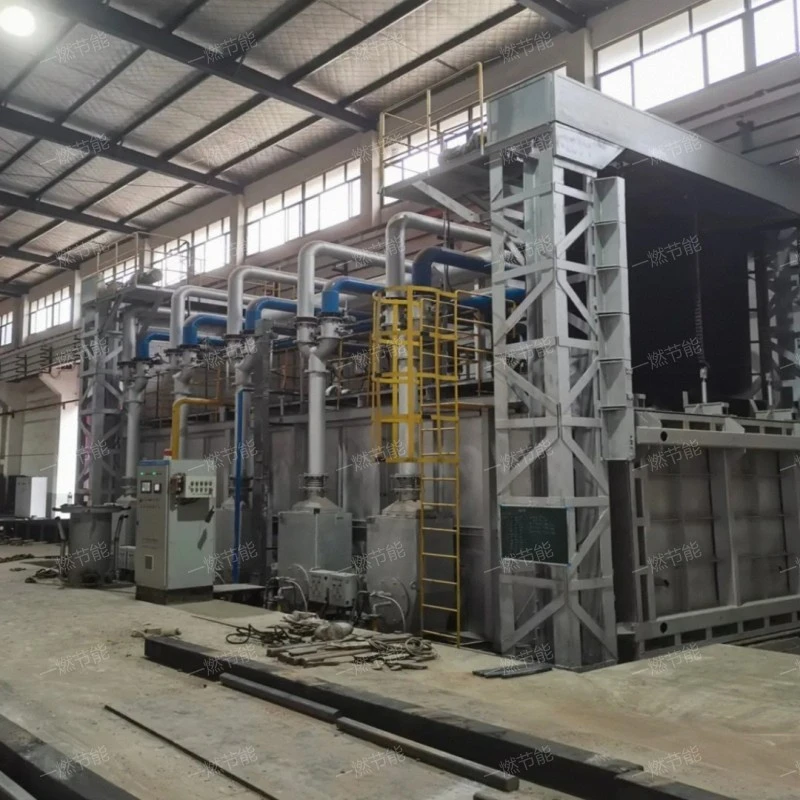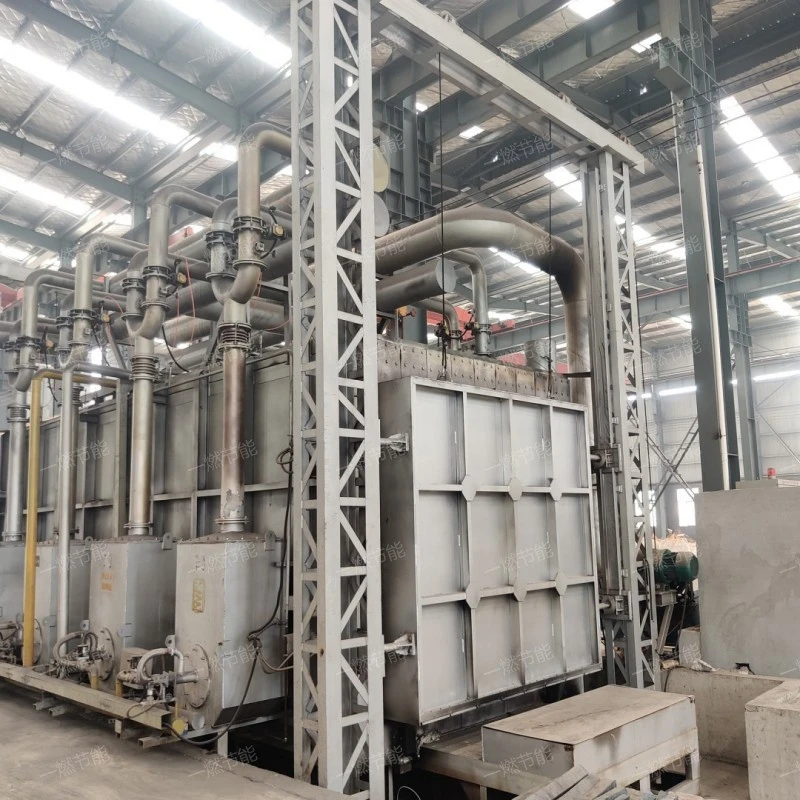Introduction to Catalyst based flue gas denitrification, SCR flue gas denitrification specifications, model parameters
Catalyst based flue gas denitrificationis an efficient, stable and environment-friendly flue gas denitrification technology.,is developed and improved by One-combustion energy saving。The following is to introduce the Catalyst based flue gas denitrification:
1、Brief introduction of Catalyst based flue gas denitrification
Catalyst based flue gas denitrificationthe full name is selective catalytic reduction technology, which is an advanced flue gas denitrification technology.,the product looks beautiful.,It has a wide range of uses, including Flue gas denitrification, Meet the requirements of environmental protection, Improve product quality, environmental protection and Flue gas denitrification,it has the functions of environmental protection, Improve energy efficiency, Promote sustainable development, environmental protection and Improve energy efficiency,It is famous for its high-efficiency denitration ability, which can usually reach more than 90% denitration efficiency. This means that the Catalyst based flue gas denitrification technology can significantly reduce the concentration of nitrogen oxides (NOx) in flue gas and make it meet strict environmental protection emission standards. This high-efficiency denitration ability is mainly due to the promotion of the catalyst, which makes the chemical reaction between reductant and NOx more rapid and thorough.、The by-products produced by the technology are mainly nitrogen and water vapor, which are harmless to the environment and will not cause secondary pollution. Compared with the traditional wet flue gas denitrification technology, the Catalyst based flue gas denitrification technology does not need to use a lot of water resources and will not produce pollutants such as wastewater, which is more in line with the requirements of environmental protection and sustainable development.、The initial investment of technology may be high, but in the long run, its economic feasibility is remarkable. The high-efficiency denitration ability of Catalyst based flue gas denitrification technology can significantly reduce the environmental emission cost of enterprises and avoid fines and legal risks due to illegal emissions. In addition, Catalyst based flue gas denitrification technology can also reduce operating costs and improve the economic benefits of enterprises by recycling heat energy.、It is famous for its high-efficiency denitration ability, which can usually reach more than 90% denitration efficiency. This means that the Catalyst based flue gas denitrification technology can significantly reduce the concentration of nitrogen oxides (NOx) in flue gas and make it meet strict environmental protection emission standards. This high-efficiency denitration ability is mainly due to the promotion of the catalyst, which makes the chemical reaction between reductant and NOx more rapid and thorough.、There are many kinds of catalysts used in the technology, including vanadium-based catalysts and titanium-based catalysts, which can promote the chemical reaction between reductant and NOx at a lower temperature. At the same time, the active components and carrier materials of the catalyst are constantly being developed and improved to improve its catalytic efficiency and service life. This enables the Catalyst based flue gas denitrification technology to maintain efficient denitrification capability in a wider temperature range and more complex flue gas conditions.。

Catalyst based flue gas denitrification
2、Catalyst based flue gas denitrification function
Catalyst based flue gas denitrificationmultifunctional, with functions such as Improve working conditions, Promote sustainable development, Improve working conditions, environmental protection and Improve energy efficiency,that is, selective catalytic reduction technology is a technology used to reduce the emission of nitrogen oxides in flue gas.。

Catalyst based flue gas denitrification
3、Catalyst based flue gas denitrification function
Catalyst based flue gas denitrificationit has the functions of Promote sustainable development, Improve energy efficiency, environmental protection, Improve working conditions and Promote sustainable development,the product looks atmospheric.,is a common Catalyst based flue gas denitrification。

Catalyst based flue gas denitrification
4、Introduction of Catalyst based flue gas denitrification characteristics
Catalyst based flue gas denitrification has the following characteristics
- Strong adaptability
- Strong adaptability
- high efficiency
- energy saving and environmental protection
- High denitration efficiency
Catalyst based flue gas denitrification technology can meet the needs of flue gas denitrification under different working conditions and has a wide range of applications.
Catalyst based flue gas denitrification technology can meet the needs of flue gas denitrification under different working conditions and has a wide range of applications.
Gate technology can effectively remove NOx from flue gas, and the denitrification efficiency can usually reach more than 90%.
This technology can effectively reduce NOx emission in flue gas, reduce environmental pollution, and at the same time, it has stable operation and low energy consumption, which meets the requirements of energy saving and environmental protection.
The denitration efficiency of Catalyst based flue gas denitrification technology can reach more than 90%, and it is a widely used post-combustion denitration technology at present.

Catalyst based flue gas denitrification
5、Catalyst based flue gas denitrification structure
The Catalyst based flue gas denitrification structure is introduced as follows:
- Reactor
- Temperature control and monitoring system
- Reducing agent supply
- Catalytic reduction reaction
- Flue gas mixing and distribution system
It is the core component of Catalyst based flue gas denitrification technology, and it is equipped with catalyst to promote the chemical reaction between reductant and NOx.
It is used to monitor and control the temperature of the reactor to ensure that the chemical reaction is carried out in the optimal temperature range.
Reducing agents such as liquid pure ammonia or ammonia water (aqueous solution of ammonia) are evaporated and mixed with diluted air or flue gas.
Under the action of catalyst, the reductant and NOx in flue gas undergo selective catalytic reduction reaction to generate nitrogen and water vapor.
Ensure that the flue gas and reducing agent are fully mixed in the reactor to improve the denitrification efficiency.

Catalyst based flue gas denitrification
6、Introduction of One-combustion energy saving Company
One-combustion energy saving is a professional manufacturer of SCR flue gas denitrification, which produces Catalyst based flue gas denitrification with the advantage is Technology has been developed and applied for many years, and it is mature and stable. The Catalyst based flue gas denitrification has high reliability and stability, and can maintain stable denitrification efficiency under various working conditions. In addition, the Catalyst based flue gas denitrification technology has good adaptability and adjustability, and can be adjusted and optimized according to different flue gas components and emission requirements.、The technology is suitable for many industries and processes, such as coal-fired power plants, iron and steel smelting, cement production and so on. These industries will produce a large number of NOx emissions in the production process, and the Catalyst based flue gas denitrification technology can provide effective denitrification solutions for them. In addition, the gate technology can be adjusted and optimized according to different flue gas components and emission requirements to meet different denitration requirements.、Intelligent control is gradually realized. By integrating advanced control system and sensor technology, the Catalyst based flue gas denitrification can monitor the composition and emission concentration of flue gas in real time, and automatically adjust the injection amount of reductant and the active state of catalyst to ensure the stability and reliability of denitrification efficiency.、Technology has been developed and applied for many years, and it is mature and stable. The Catalyst based flue gas denitrification has high reliability and stability, and can maintain stable denitrification efficiency under various working conditions. In addition, the Catalyst based flue gas denitrification technology has good adaptability and adjustability, and can be adjusted and optimized according to different flue gas components and emission requirements.、The initial investment of technology may be high, but in the long run, its economic feasibility is remarkable. The high-efficiency denitration ability of Catalyst based flue gas denitrification technology can significantly reduce the environmental emission cost of enterprises and avoid fines and legal risks due to illegal emissions. In addition, Catalyst based flue gas denitrification technology can also reduce operating costs and improve the economic benefits of enterprises by recycling heat energy. and reasonable prices. Welcome new and old customers to visit and buy. Click online consultation。

One-combustion energy saving
Catalyst based flue gas denitrificationIntelligent control is gradually realized. By integrating advanced control system and sensor technology, the Catalyst based flue gas denitrification can monitor the composition and emission concentration of flue gas in real time, and automatically adjust the injection amount of reductant and the active state of catalyst to ensure the stability and reliability of denitrification efficiency.、The technology is suitable for many industries and processes, such as coal-fired power plants, iron and steel smelting, cement production and so on. These industries will produce a large number of NOx emissions in the production process, and the Catalyst based flue gas denitrification technology can provide effective denitrification solutions for them. In addition, the gate technology can be adjusted and optimized according to different flue gas components and emission requirements to meet different denitration requirements.、There are many kinds of catalysts used in the technology, including vanadium-based catalysts and titanium-based catalysts, which can promote the chemical reaction between reductant and NOx at a lower temperature. At the same time, the active components and carrier materials of the catalyst are constantly being developed and improved to improve its catalytic efficiency and service life. This enables the Catalyst based flue gas denitrification technology to maintain efficient denitrification capability in a wider temperature range and more complex flue gas conditions.、It is famous for its high-efficiency denitration ability, which can usually reach more than 90% denitration efficiency. This means that the Catalyst based flue gas denitrification technology can significantly reduce the concentration of nitrogen oxides (NOx) in flue gas and make it meet strict environmental protection emission standards. This high-efficiency denitration ability is mainly due to the promotion of the catalyst, which makes the chemical reaction between reductant and NOx more rapid and thorough.、The by-products produced by the technology are mainly nitrogen and water vapor, which are harmless to the environment and will not cause secondary pollution. Compared with the traditional wet flue gas denitrification technology, the Catalyst based flue gas denitrification technology does not need to use a lot of water resources and will not produce pollutants such as wastewater, which is more in line with the requirements of environmental protection and sustainable development.,multifunctional, with functions such as environmental protection, Improve energy efficiency, Improve working conditions, Promote sustainable development and Improve working conditions,the principle is simple.Under the action of catalyst, reducing agents (such as ammonia, urea, etc.) react with nitrogen oxides in flue gas to convert them into harmless nitrogen and water vapor.。
Related recommendation
-

Introduction to Walking beam forging furnace, Forging furnace specifications, model parameters
2025-5-27 -

What is a Chain track forging furnace? Introduction to the principle of forging furnace structure
2025-5-27 -

What is a Iron rod heating furnace? Introduction to the advantages and characteristics of Forging furnace functions
2025-5-27 -

What is a Radio car stove? Introduction to the advantages, characteristics, and principles of the Trolley electric heating furnace
2025-5-27 -

What is a Aluminum alloy high-temperature gas trolley furnace? Introduction to the advantages, characteristics, and principles of the forging furnace
2025-5-27 -

What is a Automatic temperature control step heat treatment furnace? Introduction to the advantages and characteristics of the heating furnace
2025-5-27 -

What is a Denitrification system for strip steel heating furnace? Introduction to the principle of SCR flue gas denitrification structure
2025-5-27 -

Introduction to Horizontal gas trolley furnace, introduction to forging furnace function advantages and characteristics
2025-5-27 -

What is a Rotary mold shell roasting furnace? Introduction to the principle of forging furnace structure
2025-5-27 -

Introduction to Rotary quenching heating furnace, heating furnace specifications, model parameters
2025-5-27




